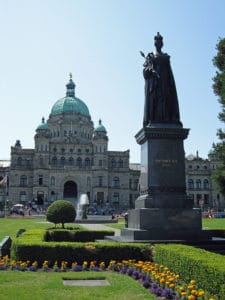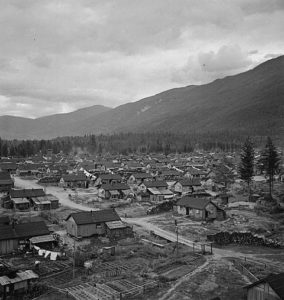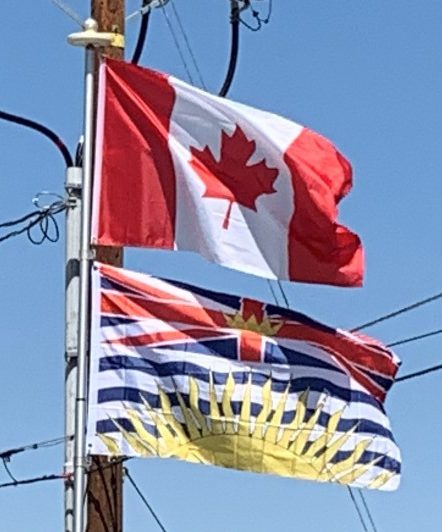
There were some signs of economic life beginning to return to normal towards the end of the 1930s, but it was the onset of World War II which transformed the national economy and ended the hard times of the Depression. Because of the war effort, women entered the workforce as never before.
British Columbia has long taken advantage of its location on the Pacific Ocean to have close relations with East Asia. However, this has often caused friction between cultures which have caused occasional displays of animosity toward Asian immigrants. This was most manifest during the Second World War when many people of Japanese descent were relocated or interned in the Interior of the province.
Coalition and the Post-War Boom:
During the Second World War the mainstream BC Liberal and BC Conservative Parties of British Columbia united in a formal coalition government under new Liberal leader John Hart, who replaced Duff Pattullo when the latter failed to win a majority in the 1941 election. Pattullo was unwilling to form a coalition with the rival Conservatives led by Royal Maitland and was replaced by Hart, who formed a coalition cabinet made up of five Liberal and three Conservative ministers. The CCF was invited to join the coalition but refused.

The pretext for continuing the coalition after the end of the Second World War was to prevent the CCF, which had won a surprise victory in Saskatchewan in 1944, from ever coming to power in British Columbia. The CCF’s popular vote was high enough in the 1945 election that they were likely to have won three-way contests and could have formed government. However, the coalition prevented that by uniting the anti-socialist vote. In the post-war environment the government initiated a series of infrastructure projects, notably the completion of Highway 97 north of Prince George to the Peace River Block, a section called the John Hart Highway and also public hospital insurance.
In 1947 the reins of the Coalition were taken over by Byron Ingemar Johnson. Increasing tension between the Liberal and Conservative coalition partners led the Liberal Party executive to vote to instruct Johnson to terminate the arrangement. Johnson ended the coalition and dropped his Conservative cabinet ministers, including Deputy Premier and Finance minister Herbert Anscomb, precipitating the general election of 1952.
195os–1960s:
With the election of the Social Credit Party, British Columbia embarked on a phase of rapid economic development. Bennett and his party governed the province for the next twenty years, during which time the government initiated an ambitious program of infrastructure development, fueled by a sustained economic boom in the forestry, mining, and energy sectors.
The 1950s and 1960s were also marked by development in the province’s transportation infrastructure. In 1960, the government established BC Ferries as a crown corporation, to provide a marine extension of the provincial highway system, also supported by federal grants as being part of the Trans-Canada Highway system. That system was improved and expanded through the construction of new highways and bridges, and paving of existing highways and provincial roads.
